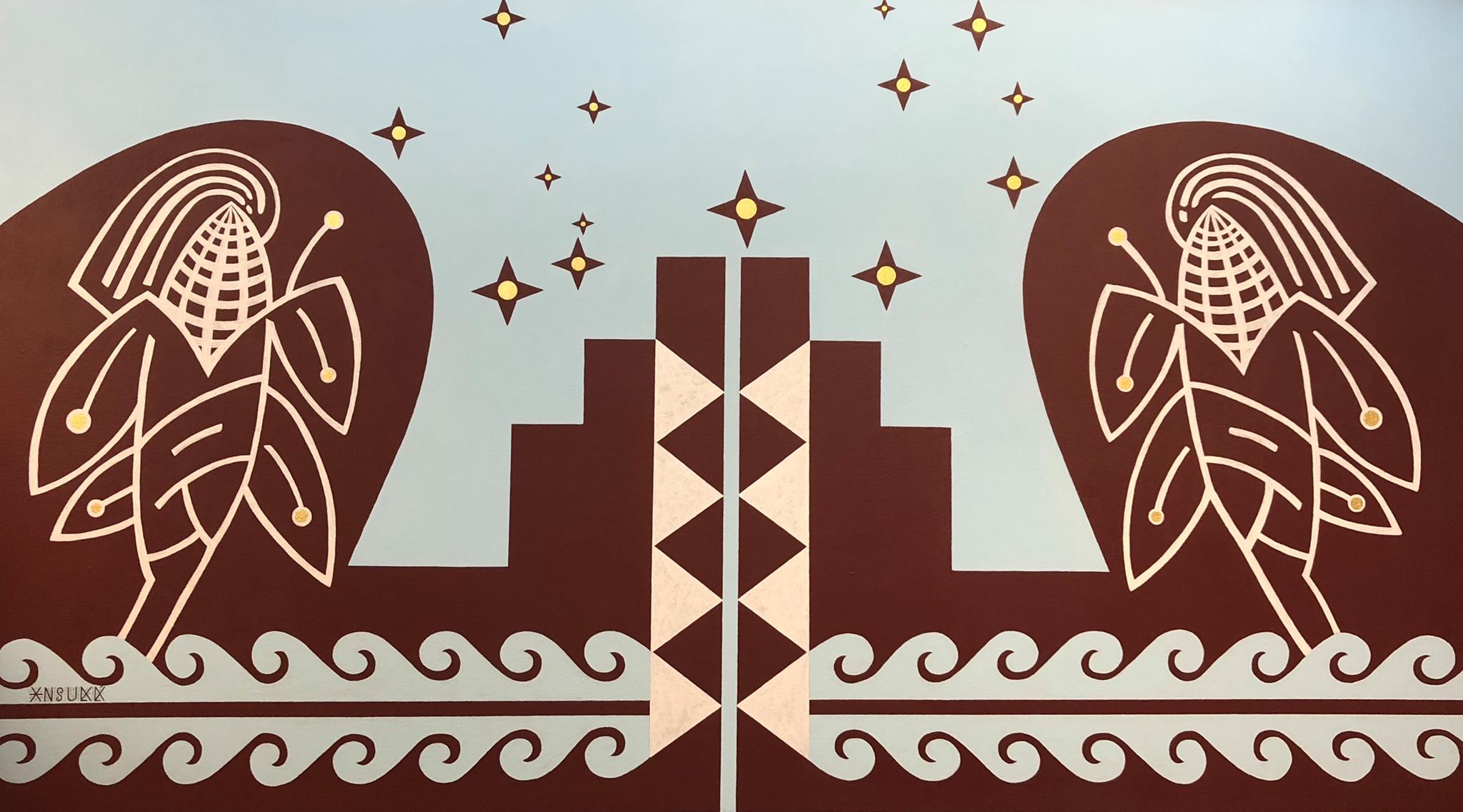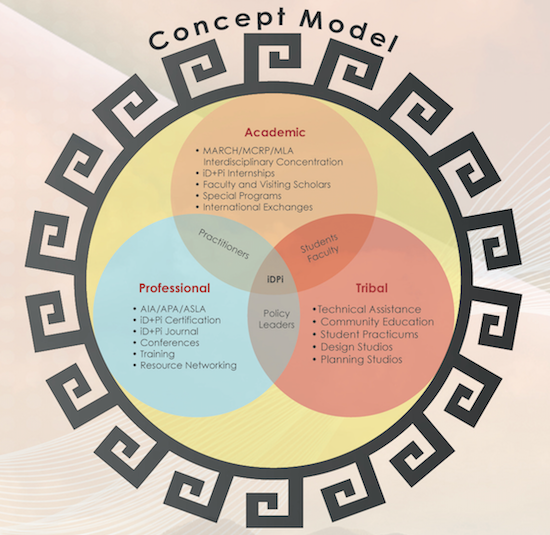About iD+Pi

iD+Pi is a new initiative of the School of Architecture + Planning, University of New Mexico. It was created in the Fall of 2011. Its goal is to educate and inform Indigenous design and planning by engaging faculty, students, professionals and community leaders in culturally responsive practices. Its three principal areas of activity are academic, professional, and tribal.
iD+Pi works in an interdisciplinary fashion with the three major programs in the School of Architecture and Planning by providing a learning environment for students, faculty and professionals to engage, its activities serve to inform Indigenous design and planning practice.
Tribes which are located principally in New Mexico and the Southwest are afforded the expertise and resources of the School’s to support projects that entail aspects of design and planning. The overarching goal of this activity is to foster sustainable communities among Indigenous populations—communities guided by principles of social justice and distinguished by healthy environments, strong local economies, and thriving cultures.
Mission
To educate by engaging faculty, students, professionals, and policy leaders in culturally appropriate design and planning practices.

Framework
Indigenous design and planning paradigms are not new concepts. Its principles are a reformulation of practices that have been used by ‘traditional’ communities for millennia. Before such traditions were banned or usurped by Euro-western agencies, tribal societies planned their communities and designed their own places.
Indigenous concepts were formulated on practices associated with land tenure. Land tenure is distinguished by long and sustained patterns of collective ownership. Such ownership was sustained over successive generations in a manner that is informed by the past, is invested in the present and builds a vision toward the future. This is known as the seven generations model.
In contrast, the Euro-western approach is temporal and based on the regulation of land-use. Landholders hold a privileged position in society and the embodiment of design and planning practice is to protect and secure an individual’s capital gain. Indigenous communities did not fare well under such colonial and neo-colonial regimes.

7 Generations Model
At the root of this conflict is how lands and resources are conveyed for those who are yet unborn. Sustainability becomes the embodiment of collective action. The land and its resources become a birthright and the primary vehicle for maintaining it is stewardship.
Given a legacy of the seven generations model, it becomes easier to understand how Indigenous communities evolved distinctive world-views. Such world-views embodied values that were essential toward attaining a balanced and symmetrical interrelationship between humankind and the natural environment. The imprints of this relationship are the unique cultures that evolved in time and place.
